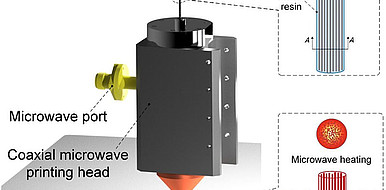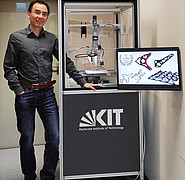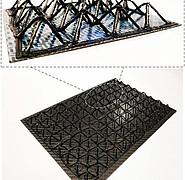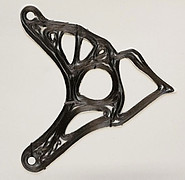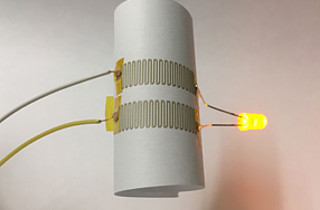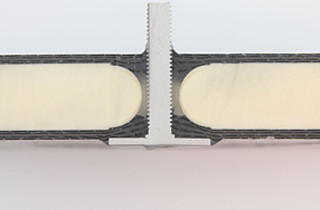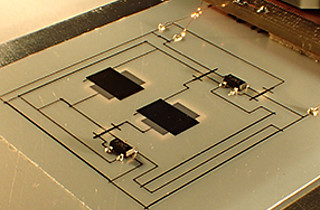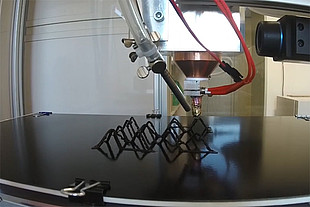3D microwave printer for continuous fiber reinforced polymer
Many industrial sectors, such as automotive and aviation industries, rely on fiber-reinforced composites as a high-tech material. Using additive manufacturing techniques, a plastic matrix with glass or carbon fiber reinforcement are used to create lightweight components with high strength.
State of the art
There are a number of additive manufacturing methods for three-dimensional plastic parts, such as fused deposition modeling, stereolithography or selective laser sintering, some of which allow 3D printing with short fibers. The known additive processes for continuous filament reinforcement, however, are severely limited in terms of filament diameter, fiber volume content and printing speed due to the disadvantage of the heating source used and the printing control technology.
Technology
Based on electromagnetic heating, scientists at the Institute for Pulsed Power and Microwave Technology (IHM) have developed an alternative 3D printing technology that can process continuous fiber reinforced thermoplastic composites (CFRTP) with high-speed. This succeeds with a resonant microwave applicator as printing head. This allows uniform and rapid heating of even large diameter filaments. Here, a pre-impregnated filament – a string-shaped polymer that encloses the continuous fibers – is fed into a coaxial resonator where it also functions as the inner conductor of the resonator. As the fiber reinforced filament moves through the resonator, it is heated over the entire volume cross-section by microwave radiation. Finally, the heated filament is pressed or pulled out of the printing nozzle and printed onto the printing platform or as a free-standing lattice structure in three-dimensional space.
Advantages
The microwave printing technology enables the flexible production of mechanically robust CFTRP composite structures by taking advantage of the benefits of instantaneous, selective and volumetric microwave heating. With a printing speed up to ten times faster than common technologies and the suitability for large diameter filaments, the process offers high potential for industrial applications.
Options for companies
A prototype of the microwave printer including a path planning and control system, called SERPENS, has been built at IHM. KIT is looking for development partners for the application-specific design of the printer and for the use of the technology, which can be scaled and retrofitted from a lab-scaled device to large industrial equipment.
Your contact person for this offer
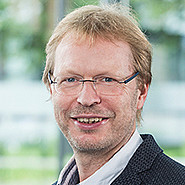
Innovation Manager Karlsruhe Institute of Technology (KIT)
Innovation and Relations Management (IRM) Phone: +49 721 608-25587
Email: rainer.koerber@kit.edu

